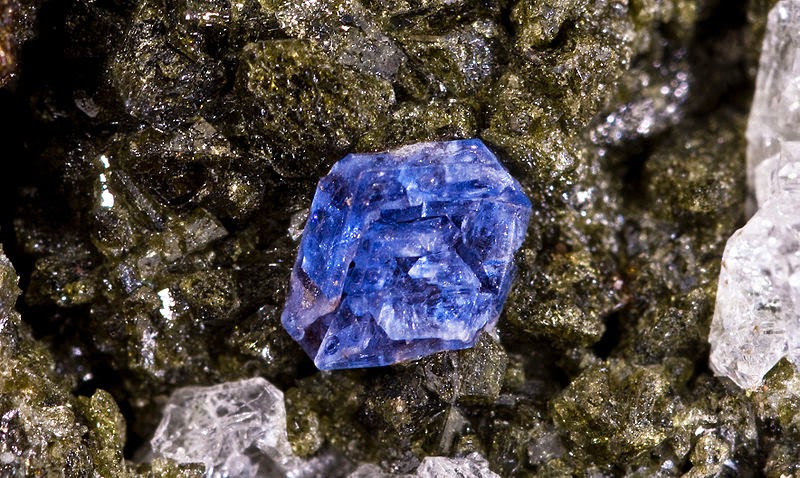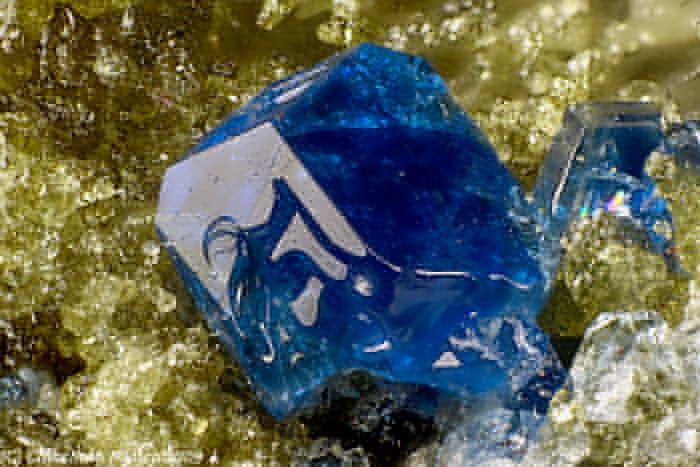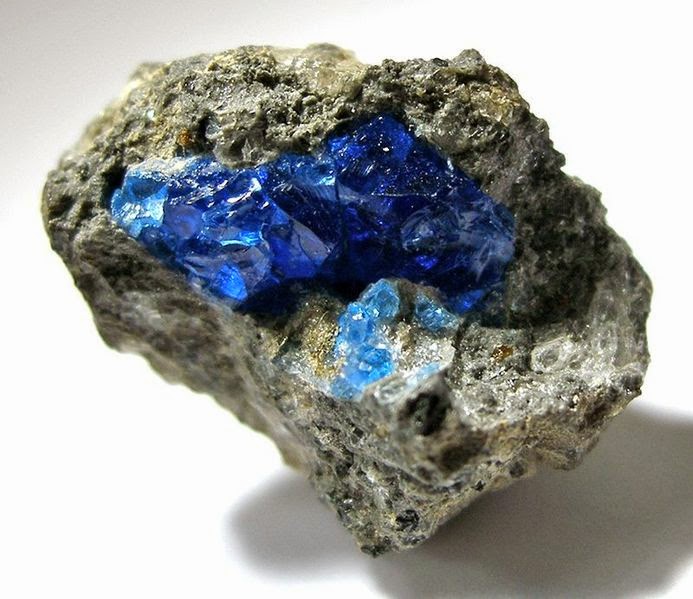
Chemical Formula: (Na,Ca)4-8(Al6Si6O24)(SO4,S,Cl)1-2
Locality: Vesuvian lavas, on Mte Somma, Italy.
Name Origin: Named after the French crystallographer, R. J. Hauy (1743-1822).
Hauyne, haüyne or hauynite was first described in 1807 from samples discovered in Vesuvian lavas in Monte Somma, Italy, and was named in 1807 by Brunn-Neergard for the French crystallographer René Just Haüy (1743–1822). It is a tectosilicate mineral with sulfate, with endmember formula (Na,Ca)4-8(Al6Si6O24)(SO4,S,Cl)1-2. As much as 5 wt % K2O may be present, and also H2O and Cl. It is a feldspathoid and a member of the sodalite group.
Physical Properties
Cleavage: {110} Perfect, {011} Perfect, {101} Perfect
Color: Blue, Green, Red, Yellow, Gray.
Density: 2.4 – 2.5, Average = 2.45
Diaphaneity: Subtransparent to translucent
Fracture: Conchoidal – Fractures developed in brittle materials characterized by smoothly curving surfaces, (e.g. quartz).
Hardness: 5-6 – Between Apatite and Orthoclase
Luminescence: Non-fluorescent.
Luster: Vitreous – Greasy
Streak: bluish white
Photo:












